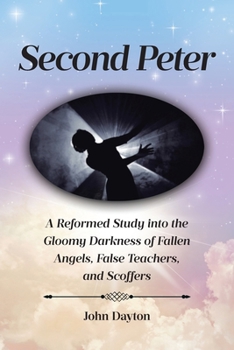Second Peter: A Reformed Study into the Gloomy Darkness of Fallen Angels, False Teachers, and Scoffers
Second Peter was written primarily to warn the church of false teachers who would deceitfully and purposely lead the saints astray and ruin the church's witness of the true gospel. To that end, Peter sets out to provide the saints with the basis for their faith with a perspective on the Father's power and gifts and what the outcome of their faith will be through Jesus Christ. Peter makes a great effort to assure the saints that the only trustworthy source of truth is the holy prophets and apostles who spoke from God and whose words are recorded in Scripture. This is to equip the saints with the knowledge necessary to resist the schemes of false teachers and scoffers. Peter is relentless against false teachers as he explains their nature, character, behavior, and purpose. He provides three examples of divine judgment of the ungodly and deliverance of the righteous to assure us that false teachers have been appointed to destruction in due time. Then there are scoffers who claim the Lord is not coming again, and there will be no final judgment. Peter disassembles their arguments, proving them lies. In doing so, Peter provides two perspectives of events on the Lord's day: First, he explains what happens to false teachers, scoffers, and the ungodly world. Then what the saints experience and receive as they are brought to glory.
The commentary seeks to bring out the meaning of each verse within its immediate and wider context. The ESV Bible was the primary text used, with comparisons made to the KJV and NASB. Important terms were checked using a Greek interlinear Bible and lexicon, which were very helpful. Individual concepts are explained or established using other Scripture passages, with references provided. Unlike many commentaries, there are no anecdotes. The commentary was intended to delve deeply and thoroughly into the Epistle yet produce a readable explanation of Peter's meaning and purpose.





